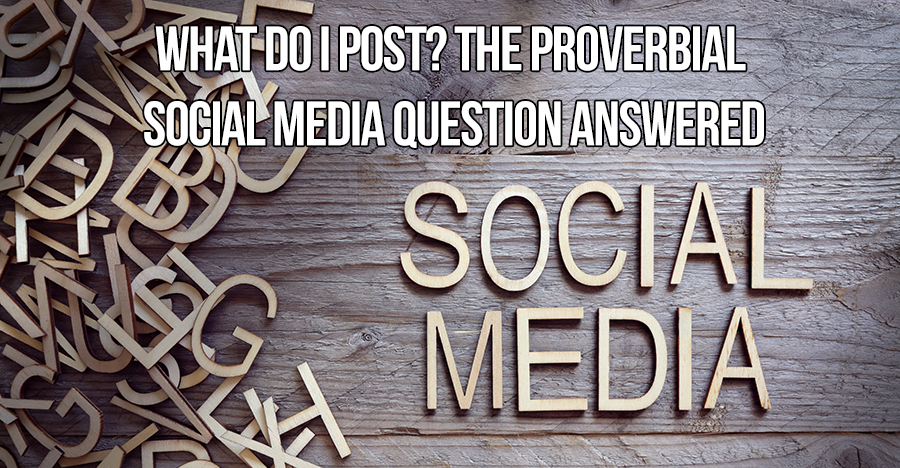Guide to Blogging and Content Marketing in 2014
What do you blog about? Do you talk about trends in your industry? New products and services? Current events? Changes in SEO have had a major impact on content marketing, and there are some critical, new do’s and don’ts when it comes to staying ahead of the curve and maximizing your blog’s reach, ranking and return.
When writing your blog, each of these are critical:

Who is your audience? When was the last time you’ve seen successful butcher marketing to vegetarians? KNOW YOUR CUSTOMERS!! I cannot stress this enough because too often, bloggers will continue to write only about their new products and services… but if your audience of prospective clients isn’t engaged, your words are falling on deaf ears. You may reap some organic ranking benefits because of website relevancy, but the last thing that you want is to spend resources perpetuating a blog that brings you no followers, traffic or leads. Social media has evolved in such a way that there’s little or no excuse for not knowing the psychographics of your current followers. Facebook’s Graph Search alone reveals in a single, quick inquiry that there are less than 100 people living in New York who “like” both the Vegetarian Times (magazine) and meat (as an interest). Imagine how much would be revealed about your followers with a few serious inquiries and how it would influence the content you produce!
Validate your sources! If you found something irresistible that you read online and are now blogging about it, check your sources before you have an embarrassing credibility issue on your hands – and reputation. Make sure that the source(s) from which you’re getting your information is credible and that the information is correct. As many blogs are “inspired” by already-published content, carelessness of credibility is a common result of a blogger’s excitement about their topic. Furthermore, there are many parody news sources out there like The Onion, The Spoof, and the UK’s The Daily Mash that thrive on making “spoofs” of news topics and current events – and doing so quite convincingly. As of the spring of 2013, over 50% of people were learning about “breaking news” via social media rather than official news sources, only to find that 49.1% of it was false![1] The percentage of people getting their news from Facebook (from among those getting their news from social media) was 59.5% – the same percentage of people overall who were getting their news from television news broadcasts. Imagine how much of that so-called news is, at the very least, skewed for promotional purposes if not contrived altogether. Cross-verify until you’re absolutely certain that your next post won’t be a retraction and an apology.
Make it interesting. Want to be an industry leader? Take the insights you’ve gained from your behavioral research (even if it’s just a Facebook Graph search) and make sure you’re giving your audience the right content to keep them engaged. Better yet, create content that’s so interesting or useful that members of your audience are compelled to share it – that’s when you know you’ve “arrived” with respect to your content management. People see hundreds of links, posts and pictures every day, and it’s up to you whether yours are clicked or scrolled over. Be honest with your blog, but don’t alienate your audience. Be a solution-maker, an information authority, a problem-solver and always a comedian – but content marketing is one arena in which the cardinal rule of bartending applies: don’t talk about politics, sex or religion. Unless the organization for which you’re making content pertains directly to one of these three genres, your entire content calendar will be thrown off by the amount of moderation necessary to quell the aftermath of 1 well-intended post.
Think this blog is long already? Good… In short, with the encryption of keywords in organic search on both Google and Bing, combined with Google’s hyperthreaded intelligence mapping (AI for search), longer content has re-emerged as favorable to the search engines and readers. Google wants to present the most substantial, relevant and informative results to its searchers… and while long-form content hasn’t been shown to increase traffic, it does rankings and conversions[2] with lower bounce rates and higher time on site.[3] As market need has created the demand for ways to organize good articles that require more time to read, countless apps have been developed to corral “content to be read later,” even offline when the reader doesn’t have WiFi access.

Make it impossible not to be found. You may have noticed by the repetition of the phrase “content marketing,” blogging is no longer enough! What’s more? Repurposing and republishing content is now encouraged![4] Inbound marketing is still very much inbound – so knowing how to spin your content into different forms for different platforms is critical.[5] Be sure to:
- Use multimedia in blogs – even if you’re just posting on Facebook, posts with

Re-publish your blog on other platforms photos/graphics are twice as likely to be clicked than those that are all-text
- Use that multimedia to syndicate your blogs on other platforms like Pinterest or Instagram
- Reformat your content into other forms that can be delivered by different means
- Capture the highlights of your content in an infographics
That’s the new world of blogging… which is now just the first step in content marketing. The commitment is non-negotiable; the social web demands more substance, versatility and accessibility than the days when short blogs on a single platform were enough to launch a brand. It may seem a lot of change, especially when repurposing and republishing, but if you know the content you’re creating is both well-crafted and well-targeted you’ll be happy with the fruits of your efforts. Higher rankings, conversions and brand engagement are at stake – and isn’t that what made content king to begin with?










